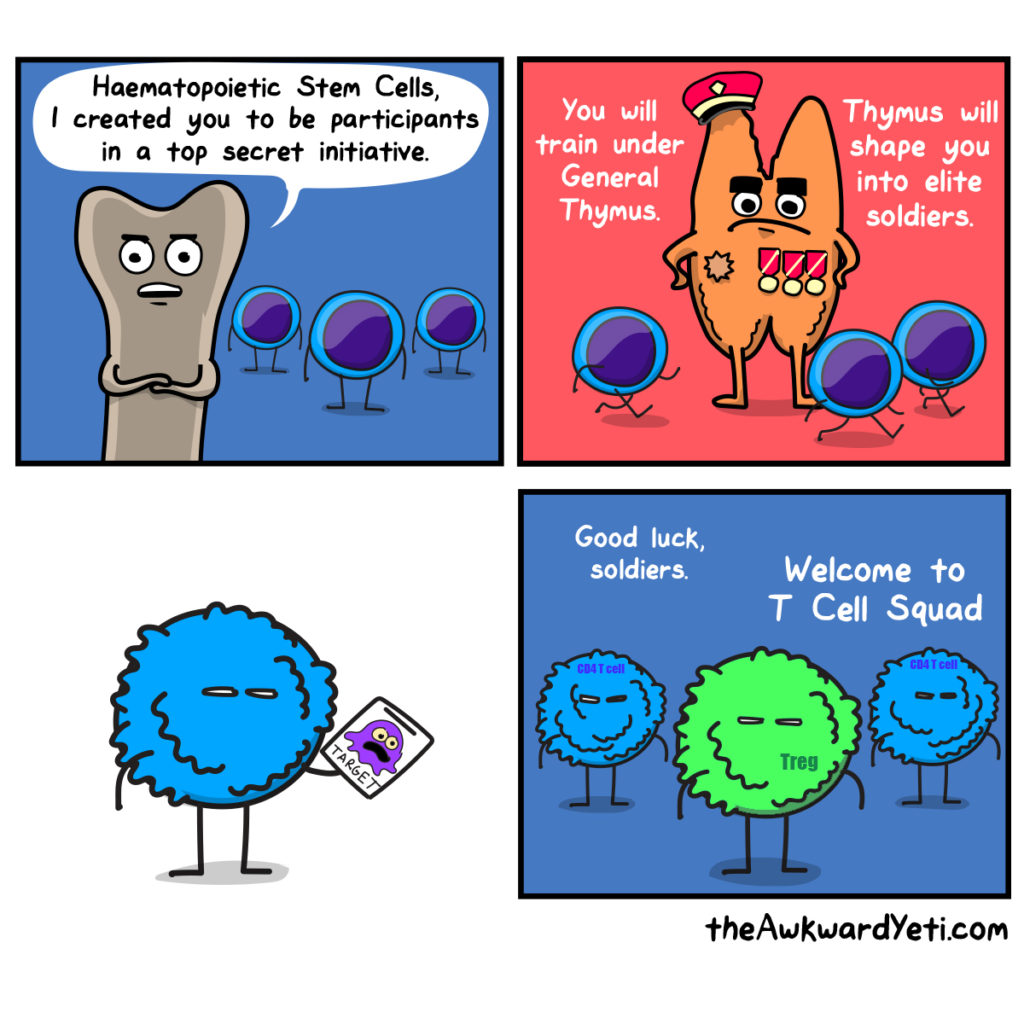A widely -though a little bit simplistic paradigm of central tolerance, in immunology, is that thymocytes undergo a process of deletion, during their differentiation, as they express a TCR that shows high affinity or avidity for MHC that load self-antigens. This mechanism helps eliminating autoreactive T cells that might unleash autoimmunity. However, the host of T cell precursors in the thymus is also the source of T regulatory cells (Treg), a central gear of the machinery that modulates and shapes the immune system. In this sense, Treg existence and features exposed all the limits of a model of central tolerance based on TCR affinity for MHC: indeed this theoretical approach could only partially explain the huge variety of T cells we see circulating, especially in light of paradoxical evidences such as that of Tregs partly sharing their TCR repertoire with that of conventional T cells, or the fact that they can be induced by self-antigen recognition. As it turns out, things are way more difficult to explain and the system that, in the thymus, decides the fate of CD4 T cells is rather convoluted, as Ludger Klein, Ellen A Robey and Cyi- Song Hsieh explained so eminently in Nature Reviews Immunology, last week.
The review splendidly explains the molecular mechanisms through which the immune tolerance skews CD4 thymic precursors either towards classical T cells or Treg, explaining the details of the role played on this function by the expression of ubiquitous and tissue-restricted antigens.
Source: Nature Reviews Immunology
Image modified from The Awkward Yeti

